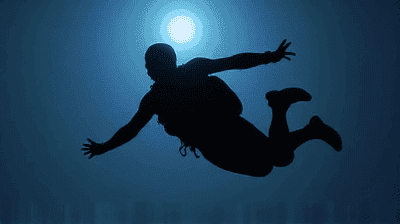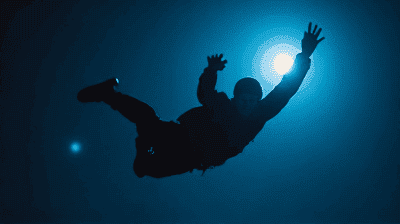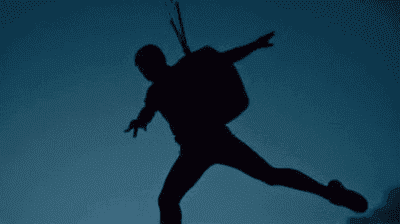

Night skydiving is a thrilling and adventurous activity that pushes the boundaries of traditional skydiving. While daytime dives allow jumpers to soak in breathtaking views of landscapes bathed in sunlight, night skydiving offers a unique, exhilarating experience where the excitement of freefall is heightened by the enveloping darkness. Imagine leaping from an aircraft into the vast night sky, where you are surrounded by stars and the distant lights of cities below. This experience draws an entirely different crowd, appealing to adrenaline junkies looking for a new adventure.
Before delving into the specifics of night skydiving, it is essential to understand the fundamentals of skydiving itself. Skydiving involves exiting an aircraft and experiencing free fall before deploying a parachute to safely descend to the ground. Key components that define the skydiving experience include:
Altitude: The standard altitude for regular skydiving typically ranges from 10,000 to 15,000 feet, providing about 30 seconds to a minute of free fall.
Free Fall: During free fall, jumpers experience gravity's effects, racing toward the ground before the parachute is deployed.
Deployment: After an exhilarating free fall, jumpers deploy their parachutes, allowing for a controlled descent and landing.
While the core principles of skydiving remain the same for night jumps, several aspects set night skydiving apart:
Environment: Night skydiving occurs in darkness, which creates an entirely different atmosphere. The sensations experienced are distinct, and navigational challenges arise when assessing ground features and preparing for landing.
Adrenaline Rush: Jumping into the unknown intensifies the excitement. Darkness can heighten feelings of anticipation and thrill as jumpers leave behind the security of daylight.
Visual Experience: In stark contrast to daytime jumps, night skydiving offers an opportunity to see the Earth from a unique perspective. The sensation of floating through complete darkness punctuated by starry skies creates a surreal experience.

Participating in night skydiving requires additional training beyond what is necessary for standard daytime jumps. Here are the essential training components:
Technical Skills: Night jumpers must master advanced skydiving techniques, including controlled exits, descents, and parachute deployment in darkness.
Navigation Skills: Understanding how to navigate and orient oneself without visual cues is vital. Jumpers learn to recognize landmarks, use sound to gauge distance, and utilize instruments if available.
Pre-Flight Briefing: Operators conduct thorough briefings before night jumps to ensure that all participants are aware of the specific challenges and safety procedures unique to nighttime skydiving.
The right equipment is crucial for a safe and enjoyable night skydiving experience. Some specialized gear required for night jumps includes:
Jump Suit: A full-body jump suit provides protection and insulation from the cold at high altitudes.
Helmet with Lights: Jumpers should wear a helmet equipped with lights to ensure visibility both for themselves and for the jump masters.
Parachute with Glow Indicators: A parachute that features glow indicators or reflective elements can enhance visibility during descent and landing.
Altimeter: An altimeter is essential for monitoring altitude, especially in low visibility conditions. Digital altimeters with backlighting are particularly beneficial for night jumps.
Emergency Gear: A secondary parachute system, as well as other emergency equipment, should always be checked prior to any jump.
Jumping at night requires not only physical readiness but also mental conditioning. Jumpers should focus on:
Physical Fitness: Engaging in regular exercise to build strength, endurance, and flexibility can help jumpers manage their performance in challenging conditions.
Mental Training: Practicing relaxation techniques and visualizing the jump can assist in reducing pre-jump anxiety.
Team Coordination: Establishing communication and trust with instructors and fellow jumpers is crucial for a successful night jump. Everyone needs to be on the same page and foster a supportive environment.
The night skydiving experience begins with careful choreography prior to the jump:
Flight Briefing: Before takeoff, jumpers gather for a comprehensive briefing that outlines the plan for the evening, the flight path, and the order of jumps.
Preparing for Takeoff: Participants don their equipment and perform final checks to ensure that everything is secure. Nervous excitement fills the air as jumpers board the aircraft and prepare for ascent.
Climbing to Altitude: As the aircraft climbs to altitude, jumpers take in the atmosphere. The anticipation builds as they prepare to take the leap into the darkness.
As the aircraft reaches the intended altitude, jumpers gather near the door, ready to make their exit:
Exiting the Aircraft: The experience of exiting the aircraft in darkness is exhilarating. Jumpers often feel an adrenaline rush as they leave the safety of the plane and plunge into the void.
Free Fall in Darkness: During free fall, the sensation is like no other. Without visual cues, jumpers rely on their body awareness, the rush of wind, and the sounds surrounding them. The silence of the night can be both calming and exhilarating.
Orientation and Control: Maintaining control in free fall is critical, especially when jumps occur in darkness. Night jumpers utilize body positions learned in training to achieve stability and maximize control.
As jumpers descend, they become attuned to the environment around them:
Altitude Monitoring: Throughout the descent, jumpers must track their altitude closely, watching for the right moment to deploy.
Parachute Deployment: Once the designated altitude is reached, jumpers deploy their parachutes. The moment of opening can be accompanied by a sudden change in speed and direction, followed by a serene glide in the night sky.
Observing the Ground: With the parachute deployed, jumpers can take in the spectacular sights from above. The twinkling lights of cities, the vast expanse of darkness interrupted only by stars—these views create an unforgettable atmosphere.
Landing during a night skydive requires focus and precision:
Identifying Landing Zones: Jumpers prepare to land by identifying their parachute target area using any available lights and landmarks. Effective navigation techniques will aid in making an accurate landing.
Controlled Landing: Achieving a smooth landing entails mastering techniques learned during training. Jumpers aim to land on their feet, absorbing the impact to ensure safety.
Post-Landing Procedures: Once on solid ground, jumpers often share high-fives and celebratory cheers with fellow jumpers, relishing the thrill of conquering a night sky.

While night skydiving is thrilling, it presents unique risks and challenges that must be carefully managed. Key safety considerations include:
Limited Visibility: The absence of natural light affects situational awareness. Jumpers must adapt to low visibility conditions by using illuminated instruments and practicing navigation techniques.
Temperature Variances: Cold temperatures at altitude can lead to hypothermia. To mitigate this risk, jumpers should wear appropriate thermal clothing and monitor their body temperature.
Weather Conditions: Night skydiving is heavily dependent on weather. Operators must continually assess conditions, monitoring for wind, cloud cover, and precipitation before allowing jumps.
Preparation for emergencies is crucial. Night jumpers should be trained in emergency protocols, including:
Dealing with Equipment Malfunctions: Understanding how to respond to parachute failures, including deploying a secondary parachute, is essential for every jumper.
Handling Free Fall Challenges: If orientation becomes difficult during free fall, jumpers are taught techniques to regain control and stabilize themselves.
Landing Emergencies: Should a landing require adjustments due to unexpected conditions, jumpers should know emergency landing techniques to reduce impact risks.
Jumpers should select experienced skydiving schools that offer specialized night jump programs. Key features to look for include:
Certification and Experience: Seek operators with a strong reputation in skydiving who specifically offer night jumps. Look for instructors with proven expertise in night skydiving.
Comprehensive Training Programs: A reliable operator will provide thorough training, covering specialized skills and safety protocols for night skydiving.
High Safety Standards: Research the safety record of the operator, ensuring that they maintain a solid reputation for safety and professionalism.
Anecdotes from individuals who have experienced night skydiving add a personal element to this exhilarating activity. Many jumpers report transformative experiences:
Confronting Fears: Several jumpers recount facing their fears of darkness and height in a cathartic way, leading to a sense of empowerment following the jump.
Mesmerizing Views: Jumpers frequently talk about the beauty of seeing city lights twinkling below, creating a magical environment unlike anything experienced during the daytime.
Sense of Freedom: The feeling of weightlessness and liberation during the free fall often leads to a profound sense of freedom. Many jumpers describe it as an almost spiritual experience, connecting them to the universe.

Night skydiving is the ultimate thrill for those seeking adventure beyond the ordinary. It offers a unique blend of excitement and serenity, allowing participants to leap into vast darkness and embrace the unknown. With proper preparation, training, and safety measures in place, jumpers can experience the breathtaking beauty of our planet from a perspective that very few ever see.
As you contemplate your own night skydiving adventure, remember the importance of understanding what lies ahead. Embrace the thrill, challenge your comfort zones, and prepare for an unforgettable leap into the night sky.
Copyright © 2024 Challenging XS. All rights by Challenging XS.